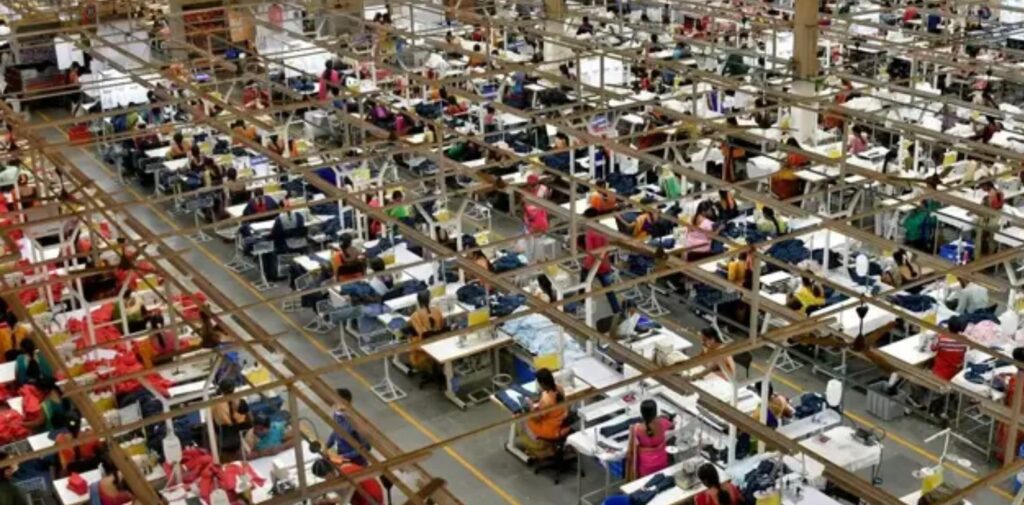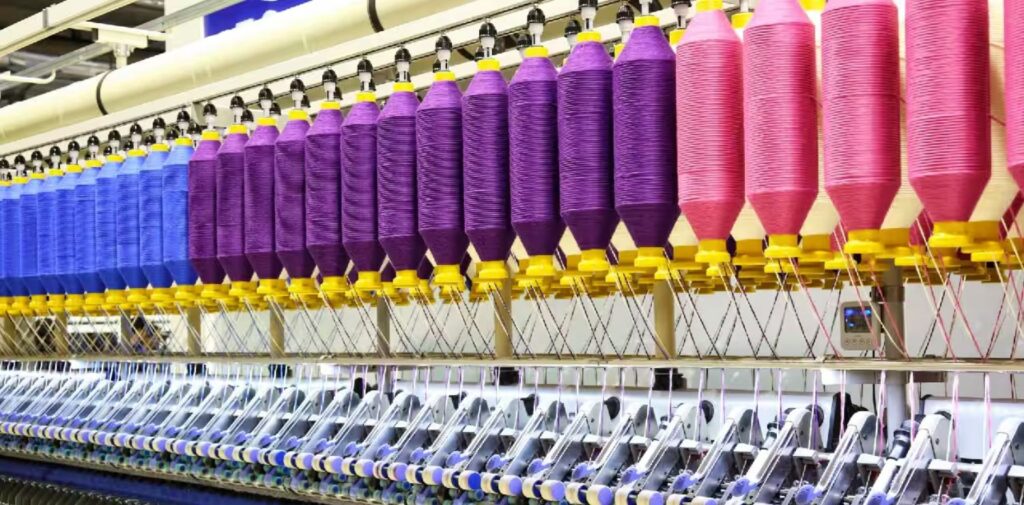The Indian textile industry, one of the oldest and most significant sectors of the Indian economy, has seen a remarkable revival in the 21st century. Known for its rich history, diverse fabrics, and skilled craftsmanship, the Indian textile industry was once a major player on the global stage. However, over time, it faced numerous challenges due to changing global markets, technological advances, and competition. In the 21st century, the industry has been reborn, overcoming many of these obstacles and positioning itself for future growth. This article explores the revival of the Indian textile industry in the 21st century and the factors contributing to its resurgence.
Historical Importance of the Indian Textile Industry
India’s textile industry dates back thousands of years, and the country has been a major producer of textiles for much of its history. The country’s ancient history boasts of fine cotton fabrics, wool, and silk, with textiles playing a key role in trade with the Middle East, Europe, and Asia. Indian textiles were famous for their quality and intricate designs. The British colonial era, however, disrupted the industry significantly, as India’s thriving textile mills were forced to compete with British imports, which led to the decline of domestic production.
In the post-independence period, while India’s textile industry slowly began to revive, challenges such as lack of technological innovation, inadequate infrastructure, and poor quality control kept the industry from reaching its full potential. Despite these hurdles, the Indian textile industry has always been an essential part of India’s economy, providing employment to millions and representing the nation’s cultural heritage.

Technological Advancements Driving Growth
One of the key factors behind the revival of the Indian textile industry in the 21st century has been the significant improvements in technology. Modernization in textile machinery, manufacturing processes, and design innovations has allowed Indian companies to be more competitive in the global market. The shift to automated machines and advanced manufacturing technologies has drastically increased efficiency, reduced labor costs, and improved the overall quality of the products.
Indian textile companies have increasingly adopted the latest technologies in fabric production, such as digital printing, automated looms, and weaving machines, allowing them to cater to international demands more effectively. Moreover, advancements in sustainable practices, including the use of eco-friendly dyes and water-efficient processes, have contributed to the industry’s growth. These innovations have not only helped India stay relevant in the global textile market but have also allowed manufacturers to meet the increasing demand for high-quality, sustainable textiles.
Government Initiatives and Support
The revival of the Indian textile industry in the 21st century has been significantly supported by various government policies and initiatives. Recognizing the importance of textiles to India’s economic growth, the Indian government has taken several steps to improve the sector’s global competitiveness. One such initiative is the “Make in India” campaign, which was launched to promote manufacturing in India, including the textile sector.
The government has also provided financial support through schemes such as the “Textile Upgradation Fund Scheme” (TUFS), which aims to modernize the industry by providing financial assistance for upgrading machinery and improving technology. Additionally, the “National Handloom Development Programme” focuses on supporting the handloom sector, ensuring the survival of traditional craftsmanship while fostering innovation.
Other government measures such as the implementation of the Goods and Services Tax (GST), export incentives, and the establishment of textile parks have also played a crucial role in the sector’s revival. With these measures, the Indian government has created a more favorable environment for domestic and international investments, enabling the textile industry to grow rapidly.

The Rise of Sustainable Fashion
Another key factor contributing to the revival of the Indian textile industry is the increasing global demand for sustainable fashion. Consumers worldwide are becoming more conscious of the environmental and social impacts of the clothing industry. India, with its vast natural resources, is well-positioned to meet the rising demand for sustainable textiles. Many Indian textile manufacturers have taken the lead in producing eco-friendly and organic fabrics, using sustainable practices to reduce the carbon footprint of production.
Indian textile manufacturers are embracing natural dyes, organic cotton, and sustainable production methods to cater to the growing market for eco-conscious consumers. Furthermore, traditional textile arts such as handloom weaving, block printing, and embroidery have been reimagined for modern fashion trends, giving India an edge in the global sustainable fashion market. The emphasis on ethical sourcing and production is not only helping revive traditional crafts but also ensuring that the Indian textile industry remains at the forefront of the global shift toward sustainability.
Growth in Domestic and Export Markets
The revival of the Indian textile industry is not limited to just meeting domestic demand but has also been fueled by a surge in textile exports. India is one of the largest exporters of textiles and garments in the world. The sector’s success in the global market can be attributed to India’s competitive advantage in areas such as labor costs, availability of raw materials, and a wide range of textile products, including cotton, silk, wool, and jute.
Countries in the United States, Europe, the Middle East, and Southeast Asia are major importers of Indian textiles. The global demand for ready-made garments, home textiles, and fabrics has significantly boosted the export sector. India’s textile export industry has also been enhanced by the establishment of free trade agreements with countries in Europe, Asia, and other regions. These agreements have helped Indian textile manufacturers expand their reach and strengthen their position in the international market.
Domestically, the Indian textile industry has also grown in response to the rising purchasing power of the middle class and the increasing popularity of fashion among young consumers. As the Indian population becomes more fashion-conscious and diverse in its clothing choices, the demand for textiles, including modern garments and traditional clothing, has skyrocketed. The rise of online retail and e-commerce platforms has further facilitated the growth of India’s textile industry by enabling smaller manufacturers to reach a larger customer base.
The Role of Skill Development and Employment Opportunities
The revival of the Indian textile industry has brought along numerous employment opportunities, especially in rural and semi-urban areas where the majority of textile manufacturing takes place. Millions of people, particularly women, are employed in various stages of the textile production process, including spinning, weaving, dyeing, and garment making. This has provided a significant boost to rural employment and has contributed to the reduction of poverty in these areas.
Alongside job creation, the Indian textile industry has also focused on skill development. Training programs and workshops are being conducted to enhance the skills of workers, ensuring they are well-equipped to operate modern machinery and keep up with the industry’s technological advancements. Skill development programs are crucial for improving the quality of products and maintaining the competitiveness of the industry.
The government and private sector have also recognized the importance of reviving and promoting traditional textile crafts. Programs aimed at preserving handloom weaving, block printing, and embroidery techniques have helped create sustainable livelihoods for artisans and craftsmen, many of whom are based in rural regions. This focus on skill development not only strengthens India’s textile industry but also ensures that its cultural heritage is preserved for future generations.

Looking Ahead: The Future of the Indian Textile Industry
The revival of the Indian textile industry in the 21st century has positioned it for continued success. The sector has adapted to global trends such as digitalization, automation, and sustainability, while retaining its roots in traditional crafts. As India continues to modernize its textile infrastructure and expand its export markets, the future of the industry looks promising.
In the coming years, the Indian textile industry will likely see continued growth due to a combination of domestic and international factors. The increasing demand for sustainable fashion, along with the country’s strong workforce and raw material base, will help the industry continue to evolve and meet changing consumer preferences.
Additionally, India’s ability to leverage new technologies such as artificial intelligence and automation in textile manufacturing will provide further opportunities for growth. By improving productivity and reducing costs, these technologies will help Indian textile manufacturers maintain their competitive edge in the global market.
Conclusion
The revival of the Indian textile industry in the 21st century is a story of resilience, innovation, and adaptation. The industry, once in decline, has now found new life through technological advancements, government support, sustainable practices, and global demand. With its strong foundation in traditional crafts and its embrace of modern trends, the Indian textile industry is poised to thrive in the years to come. This revival not only contributes to the country’s economy but also ensures that India continues to play a leading role in the global textile market.




